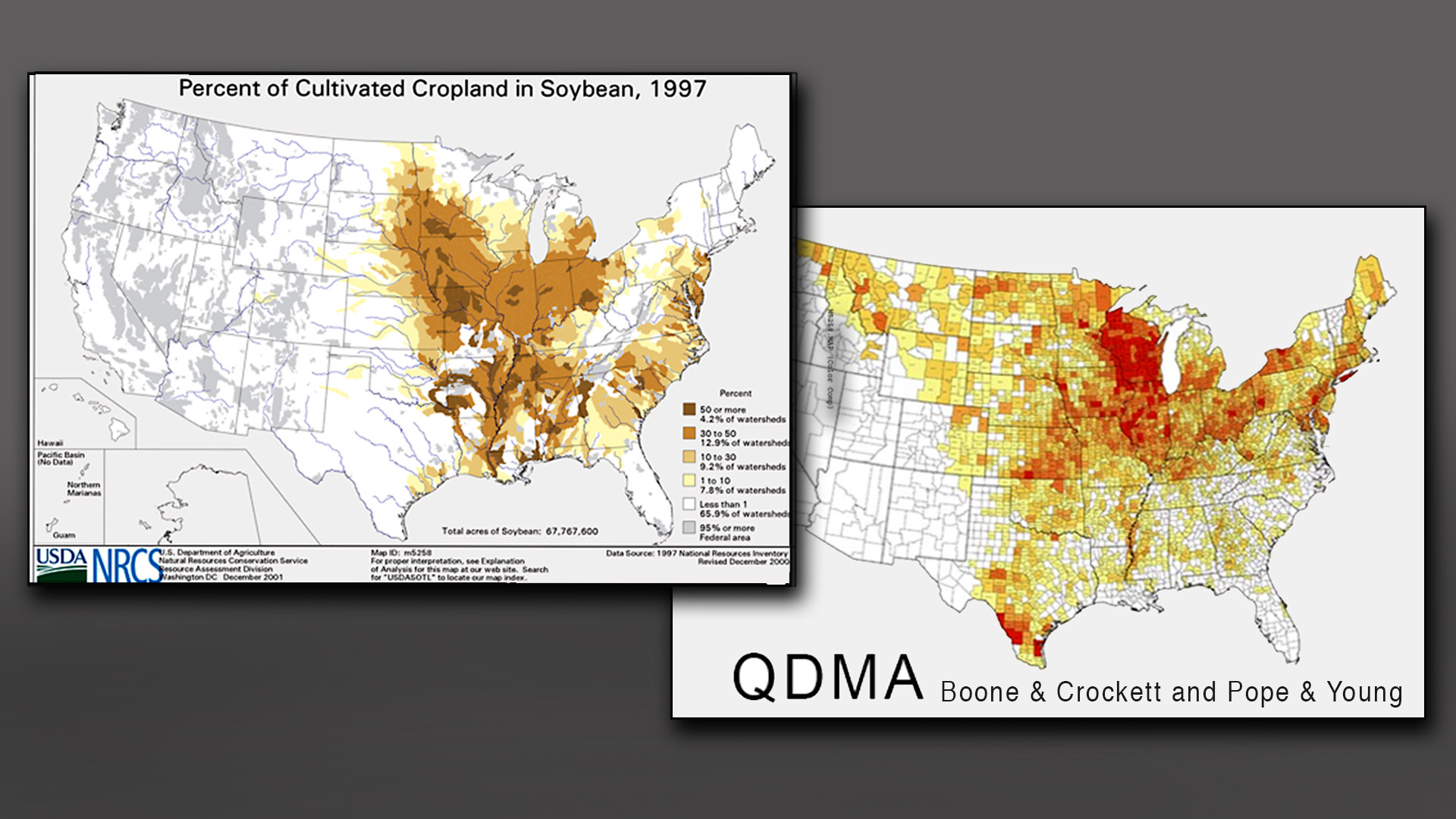Second Rule For Managing Deer And Growing Big Bucks
Filed under: Deer Management, Hunting Blog
Last week I shared the importance of allowing bucks to mature so they can express their antler growth potential (read The First Rule Of Deer Management here). By allowing more bucks to mature, there will be more bucks in the area which usually equates to better hunting.
However, there are lots of areas with a relatively high density of mature bucks, but very few bucks with good antler development. Where does this occur? It is often in areas where no habitat management activities occur. For bucks to express their genetic antler development potential, they must:
- be allowed to mature
- have access to quality forage throughout the year
Big bucks are usually seen where the combines roam. Soybean country. Compare the following maps.

The first shows the distribution of soybeans grown throughout the US and the second shows the distribution of Boone & Crockett and Pope & Young bucks harvested. The correlation is not perfect, but it’s close enough to make the point.
The good news is that soil can be improved anywhere – even if the land you hunt is not shaded on the soybean map. Notice that it’s a long way to any color on the map from where I live (Stone and Taney counties, MO). Even so, I grow great soybeans during the summer and cool season crops during hunting season. This combination has produced some great bucks on my mountainous, rocky property.
Good forage serves two purposes:
- allowing deer to express their potential
- serving as an attractant so mature bucks can be patterned
Ensuring quality forage is available year round is #2 on my top 10 list of managing land to yield mature, huntable bucks.
Growing Deer together,
Grant



